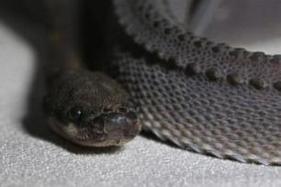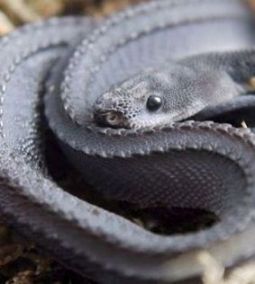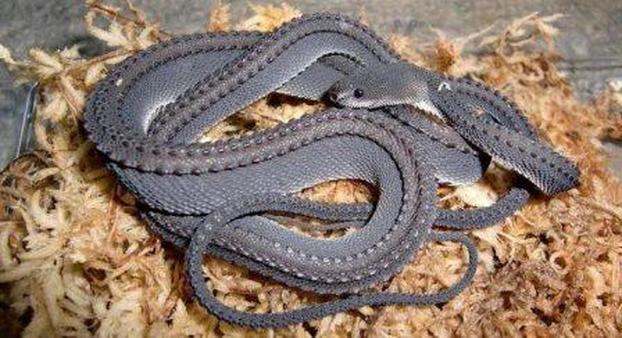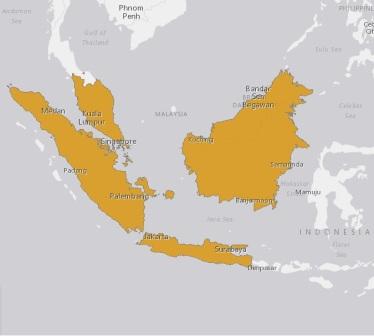Dragon SnakeXenodermus javanicus |

Custom Search
|
|
The dragon snake or dragonsnake (Xenodermus javanicus) is a strange looking non-venomous Colubrid snake species found in Southeast Asia. The species is found in several countries including Indonesia, Myanmar, Brunei, Malaysia, and Thailand.
Their range extends from extreme southern Myanmar south to Sumatra, Java, and Borneo. However, their presence in the northern part of its range including southern Thailand and southern Myanmar is based on single recorded specimens from the 1940's and 1960's. The dragon snake is most often found in areas near water or streams, including forests, marshes, swamps, and especially fond of rice fields. Dragon snakes are found from sea level to up to 4300 ft (1300 m) but are most common found at altitudes between 1650 ft and 3600 ft (500 to 1100 m). It is a semi-fossorial snake spending most of their time underground, these snakes are active during the night hunting down their prey. We still know very little about these colubrid snakes, but apparently, dragon snakes grow to about 24 to 30 inches in length and are grayish in color. They have a somewhat enlarged head and an elongated tail.

But the dragon snake most notable feature is their unusual skin, with 3 rows of enlarged, keeled scales running down its back, they look like a cross between a snake and a crocodile.
It's very easy to understand why they are commonly called dragon snakes since they have some lizard-like features. Besides their strange looks, they also have a strange habit, when touched or picked up they stiffen up, becoming “stiff" almost like a board. The dragon snakes are considered rare and not very often kept as a pet since the species does not do well in captivity, and usually doesn't survive very long. There's very little information and husbandry tips available so it's probably for the best to leave them in the wild. Subspecies / Taxonomy The dragon snake belongs to the monotypic genus Xenodermus, meaning it's the only species in that genus, and no subspecies are recognized. The species was first described in 1836 by Johannes T. Reinhardt who was a Danish zoologist, but even today we know very little about these quite unique looking snakes. The species scientific name derives from the Greek words "xeno" meaning strange and "derma" meaning skin, referring to their very strange looking skin, at least for a snake. They are also known by other common names like Javan Tubercle Snake, Javan Mudsnake, Xenodermine snake or Rough-backed Litter Snake. Diet / Feeding
The dragons snake is a nocturnal snake species and its diet consists of frogs and possibly fish. Reproduction Very little is known about the dragon snakes reproduction, but we know that the species is not a very prolific breeder. Females lay a clutch per year with 2 to 4 eggs. The eggs are laid in the raining season from October to February. Conservation / Threats The dragon snake is listed as a "Least Concern" species in the IUCN Red List of threatened species. They face no major threats and this semi-fossorial, secretive snake is geographically widespread and their population isn't severely fragmented. They are also tolerant to human modified habitats like agricultural lands such as rice fields or irrigated fields. Their population may even be increasing. However the dragon snake may be susceptible agricultural pollutants such as pesticides and fertilizers, has is their food source, frogs.
|
Did You Know?
A group of rattlesnakes is called a "rhumba" or "rumba" find some more amazing snake facts for kids. Scientific classification |
© 2014 Snake Facts About Us | Privacy Policy | Contact





